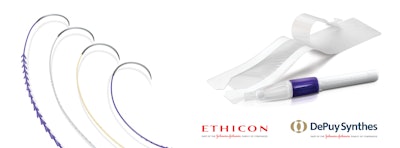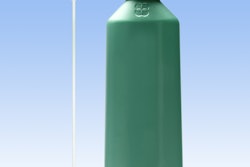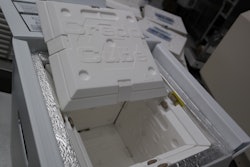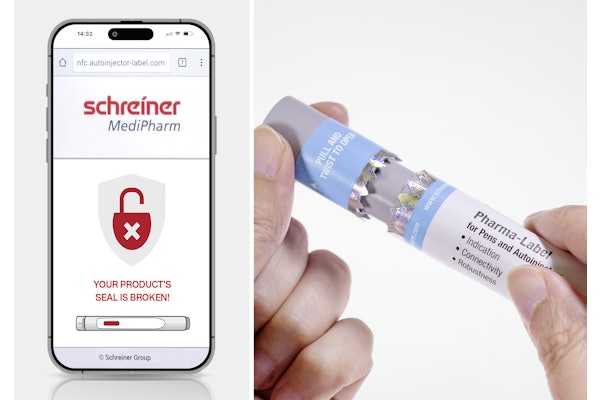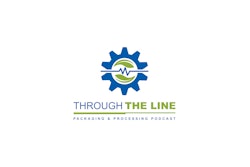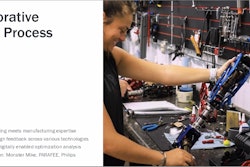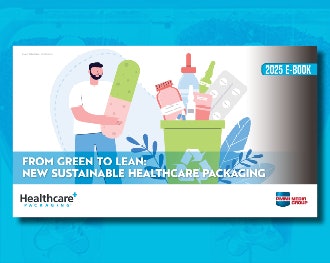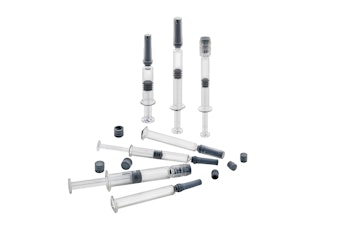One exciting development delves into ongoing research at Harvard’s Wyss Institute for Biologically Inspired Engineering. It involves the use of a hand-held device that can quickly produce nanofiber scaffolds that one day may be used to produce sterile bandages for wound care applications in the field. It’s reported as a concept similar to that of a spider producing silk and building a web.
As fascinating and promising as these and many other projects are, those of us in the packaging community wonder what such products will require of packaging. Would they need better barrier properties? More precise temperature and humidity considerations from manufacture to point of care? New materials such as nanotechnology? Maybe some of these treatments will be developed at the hospital or medical facility and won’t even require traditional packaging.
One thing is clear: the wound care market is growing, and experts predict that will continue.
Wound care market advancing
The global advanced wound care market is predicted to reach $10,940.7 million by 2022, according to Reportbuyer. Behind the growth: Rising demand to manage complex wounds from chronic diseases such as diabetes, as well as wounds caused by burns, trauma and surgery.
Grand View Research expects the bioactive wound care market to grow 6.3% a year through 2024 from its $6.9 billion value in 2015. GVR cites the development of “occlusive dressings for skin-related injuries, which help maintain a moist environment that actively promotes healing.”
Visiongain predicts the advanced wound care market will reach $17.7 billion by 2020. By 2026, Visiongain estimates that antimicrobial and foam dressings will account for more than 60% of the market, followed by hydrocolloid, alginate, film, and hydrogel dressings.
Smith & Nephew, Molnlcke Health Care, 3M Health Care, Acelity, Medline, and Ethicon are among the most well-known producers of wound care products.
Packaging trends and issues
“Two trends related to wound care packaging are customization and functionality,” says Melissa Ferguson, Ethicon’s Senior Director Packaging Development, COE Global Surgery.
Regarding customization, Ferguson refers to selling products—surgical sutures, for example, in different package counts, or even in different package formats. “Our E-Pack Procedure Kit changed to a thermoformed container in which we slot in individual sutures for a hospital or surgeon,” she explains. “The packaging was revamped to a more rigid material to improve its robustness during transport and to be more user-friendly. It holds the products more securely than the previous package.”
The functionality trend, says Ferguson, can relate to adding moisture and light barrier into a sterile barrier package. “Moisture is typically our biggest challenge,” she relates. “We also use a desiccant in packages as well. It’s very important that we prevent any additional moisture from getting into the package,” particularly for humid environments around the globe.
Since foil is a key substrate within many of Ethicon’s packaging materials, pinholing is also an issue to consider. “We work with our suppliers to make sure we have best-in-class detection and they have processes in which they detect and ‘patch’ any areas within the foil that might look like a pinhole or defect.”
One final area in which Ethicon and other manufacturers must remain vigilant is in maintaining strong seals. This is typically accomplished via appropriate machine adjustments for sealing dwell time and temperatures. “You need to provide full coverage for the seal area and make certain you don’t over- or underseal an area. We’ve found that the thinner the adhesive layer the better because the thicker the adhesive layer, the more moisture you lose,” says Ferguson.
An example is Ethicon’s PROXISURE Suturing Device, a product that was expected to reach the market in June. Says Ferguson, “Instead of just housing a suture in a plastic container, we house a whole cartridge in the pack, which includes a winding element for the suture, a dispensing element, and a cartridge that the needle moves through. This whole thing is then removed and placed on a device that allows the functionality of automatic suturing.”
She notes, “In general, we need to figure out how to put more and different products into sterile barrier packaging systems, which can be a challenge because the more complicated the product geometries, the more risk you have in creating a breach in the packaging.”
Ethicon packages most of its wound care products internally, on multiple lines, using materials from multiple suppliers. Two key material vendors are Amcor and Bemis Health Care. “They’ve done a great job, providing us with good, hi-tech materials,” says Ferguson.
Packaging requires flexibility
Acelity L.P. Inc. and its subsidiaries make up a global advanced wound care company that leverages the strengths of Kinetic Concepts, Inc. and Systagenix Wound Management, Ltd. ACELITYTMproducts are used in hospital, acute care, and home care settings.
“Our packaging needs to be as flexible as the settings in which our therapies are used, particularly whether the product is designed to be disposable or for cleaning and reuse,” explains David Ball, the company’s Senior Vice President, Operations, Quality and Regulatory.
“For example,” he notes, “V.A.C. VERAFLOTMDressings are applied in a sterile field and must be presented using sterile technique to the caregiver. In this situation, materials are selected specifically with the sterile barrier and ease of use in mind. Depending on the specific use environment, we use flexible pouches as well as rigid trays for our sterile dressings. There are extruded multilayers of nylons/polyethylenes, laminations of PET, Tyvek®, foil, and either PETG or HIPS trays in our products; all designed to provide the appropriate moisture vapor, light or transportation protection.
“We also design shipper cartons to ensure that primary sterile barrier pouches can be placed in the proper secondary carton in order to get the product to patient or healthcare provider with no damage,” says Ball.
Asked about the latest developments in wound care and what those products will require in terms of packaging, Ball explains, “The need for high-barrier materials will continue, but lower cost and lower waste is something that is also important for our customers. It’s a delicate balance to manage the difficult tradeoff between cost and protection during transportation and distribution. At Acelity, we use extensive shipping and distribution testing to assure the stability of all our products.”
Sterilization and other trends
“The method of sterilization also has a large impact on packaging design,” he continues. “Our products are sterilized using either gamma radiation or ethylene oxide. For gamma radiation sterilization, the radiation stability of the barrier material and sealing method becomes a major design driver, whereby temperature stability and breathability is more important under ethylene oxide sterilization.For our kitted products, we bulk-sterilize the sterile components so they can be kitted at a later time with other components.The bulk sterilization provides additional packaging design challenges as the product must withstand both sterilization and transportation in a bulk packaging environment that is different from the final transportation to the customer.”
Ball adds, “Another trend we are seeing in the overall wound care market is a requirement to ship fewer quantities, and even individual quantities of dressings. This is especially true outside of the U.S. and in homecare settings. Shipping individual quantities of products drives different packaging needs because the original case quantities are broken down at distribution centers into individual shippers, all while having to maintain the protection of the product during transportation.”
He says, “The industry is moving towards kitting products to make them easier to use for caregivers, and also to reduce product complexity and inventory management within hospitals. Multiple components laid out in a packaging configuration that is user-friendly and ready to go in a clinical setting is valuable. Two examples of kitted Acelity products are the PREVENATMIncision Management System and the SNAPTMTherapy System. These Acelity product kits feature all the needed components within one kit, including sterile and non-sterile components in a user-friendly presentation.”
Temperature/humidity requirements
Dynarex is an Orangeburg, NY-based provider of disposable medical products with distributor partners throughout the U.S., and in Canada, Europe and South America. Its products include wound care, antiseptics, incontinence, diagnostics, ointments and creams, gloves and more. These products are sold to pharmacies, hospitals, medical facilities and mass merchandisers via nationwide distributors.
John Burns, the company’s VP of Marketing notes, “Some of our products have special temperature or humidity level requirements—both for storage and shipping.”
Market factors driving wound care
Bruce Carlson, Publisher of Kalorama Information, a division of MarketResearch.com, says, “The aging population is one of the main factors driving the wound care market forward. Due to advancements in other medical areas such as the treatment of heart disease, people are living longer, but they are requiring more care.”
Medical care advancements push more complex wound care products as well. Says Carlson, “Skin grafting using a patient’s own skin from a non-infected site has been improving. This once required advanced surgery and was impractical. Now it can be done non-invasively.” He points to Advanced Tissue’s CelluTome Epidermal Harvesting System as an example in which clinicians and medical personnel can harvest healthy epidermal skin tissue without damage to the donor site by using heat and slight vacuum pressure to collect a thin layer of tissue.
Another area showing promise, according to Carlson, is the use of amniotic membrane products. MiMedx has developed EpiFix, a dehydrated human amnion/chrorion membrane allograft that preserves and delivers proteins present in amniotic tissue to help regenerate soft tissue. He describes it as a “minimally manipulated natural membrane that provides growth factors and an extracellular matrix for cellular ingrowth for enhanced healing.”
How will such advanced wound care therapies be regulated by the FDA? Carlson says the Center for Devices and Radiological Health (CDRH) and the Center for Biologics Evaluation and Research (CBER) both play a role. “The main question would be how traditional the item is and if it delivers a pharmaceutical or contains a biological product.If it’s a mere bandage or a device such as a negative pressure wound system that is not administering a chemical it’s going through the medical device regulation, often as a Class I or Class II device.
“When you start getting into advanced biological wound care products there is greater regulation,” says Carlson. “For many products, they merely have to demonstrate they are controlling infection risk if they are covering a wound.A traditional bone allograft goes through its own simplified process but if there are advanced biologicals, the product must have FDA premarket approval, typically in the form of a biologics license application, large-scale prospective, randomized clinical trials demonstrating safety and efficacy, all under FDA review. It is a controversial and debated area of regulation.Right now, there is a bit of manufacturer choice in what regulation path they pursue.”
Melissa Elder is an analyst, and contributor to a recent BCC Research report on advanced wound care. BCC is a publisher of technology market research reports. She believes, “Biological, synthetic and natural wound care products all have niche areas of development and innovation.
“In the biological technology area, collagen products have captured the attention of developers. Smith & Nephew and Lifecell have been committed to the development of advanced dressings. The key motivation here is the attention to chronic wound healing. Chronic wounds are also the supporting segment for synthetic dressings. Innovation in the foam and hydrogel dressings have expanded market opportunities in recent years.
“Natural technologies, primarily alginates, represent a growing area of the advanced wound dressing market,” Elder continues. “Acute burn wounds are a driving area for this segment as are hard-to-heal wounds such as diabetic and pressure wounds. Smith & Nephew is the leading contributor to this segment.”
